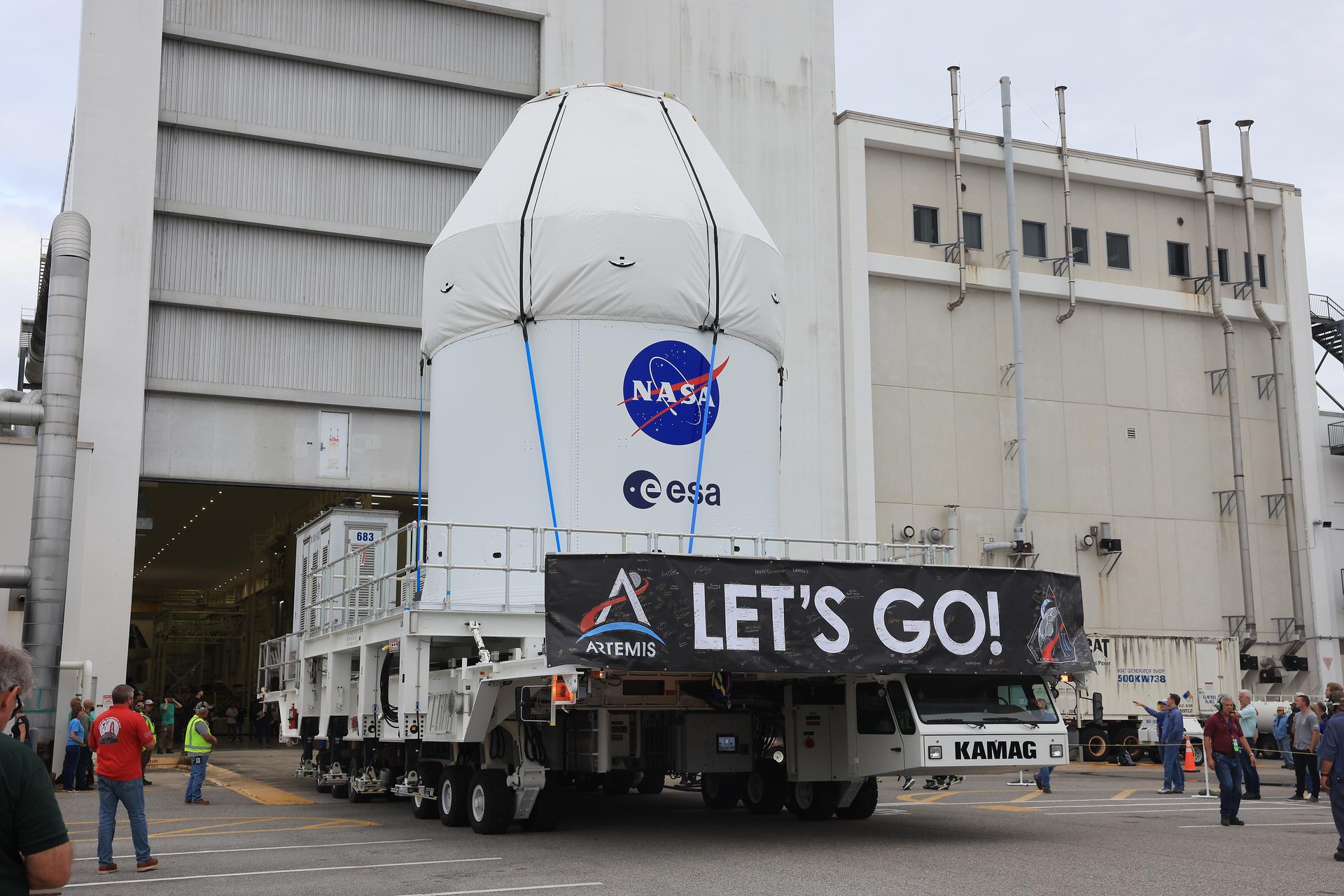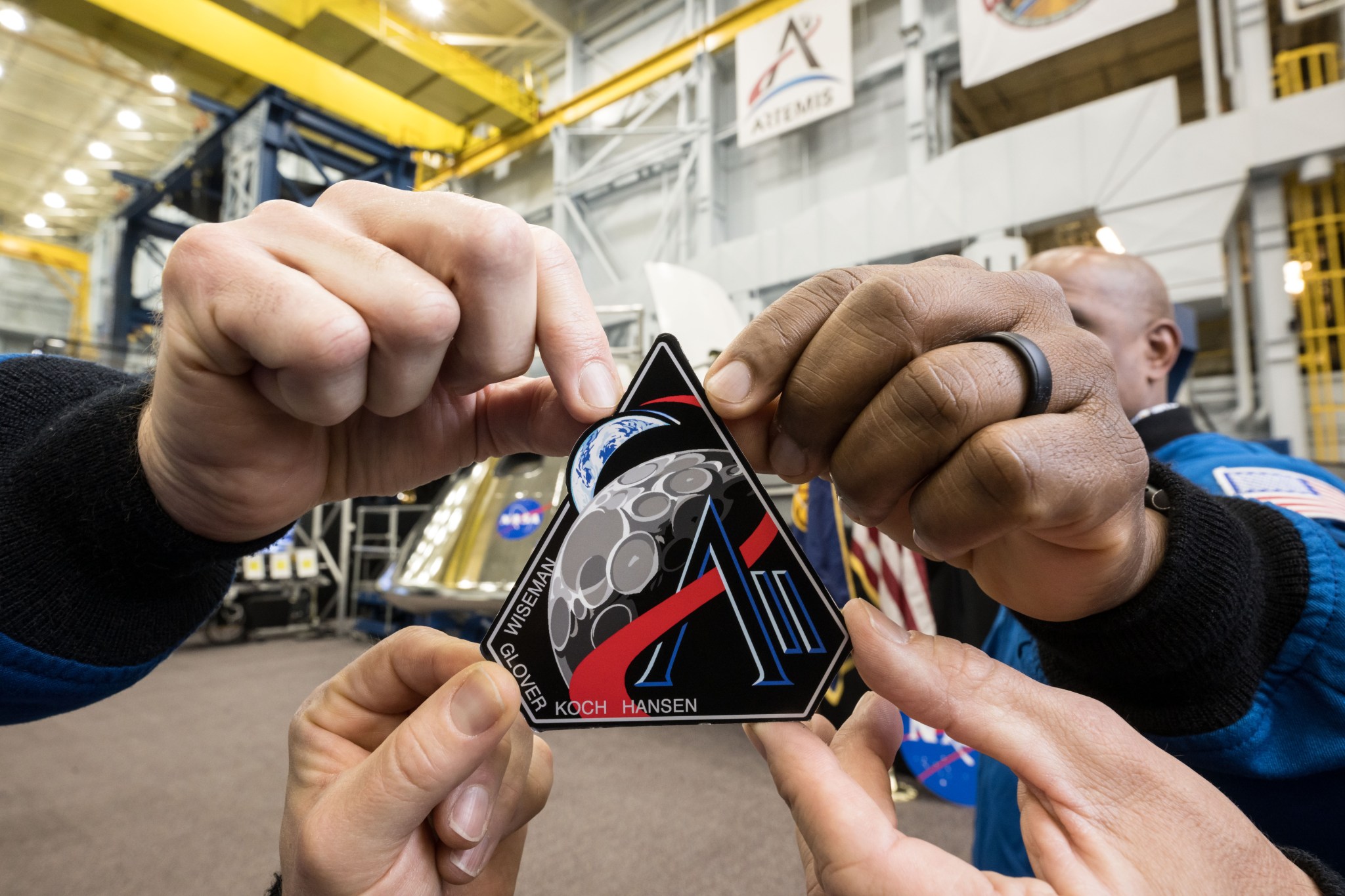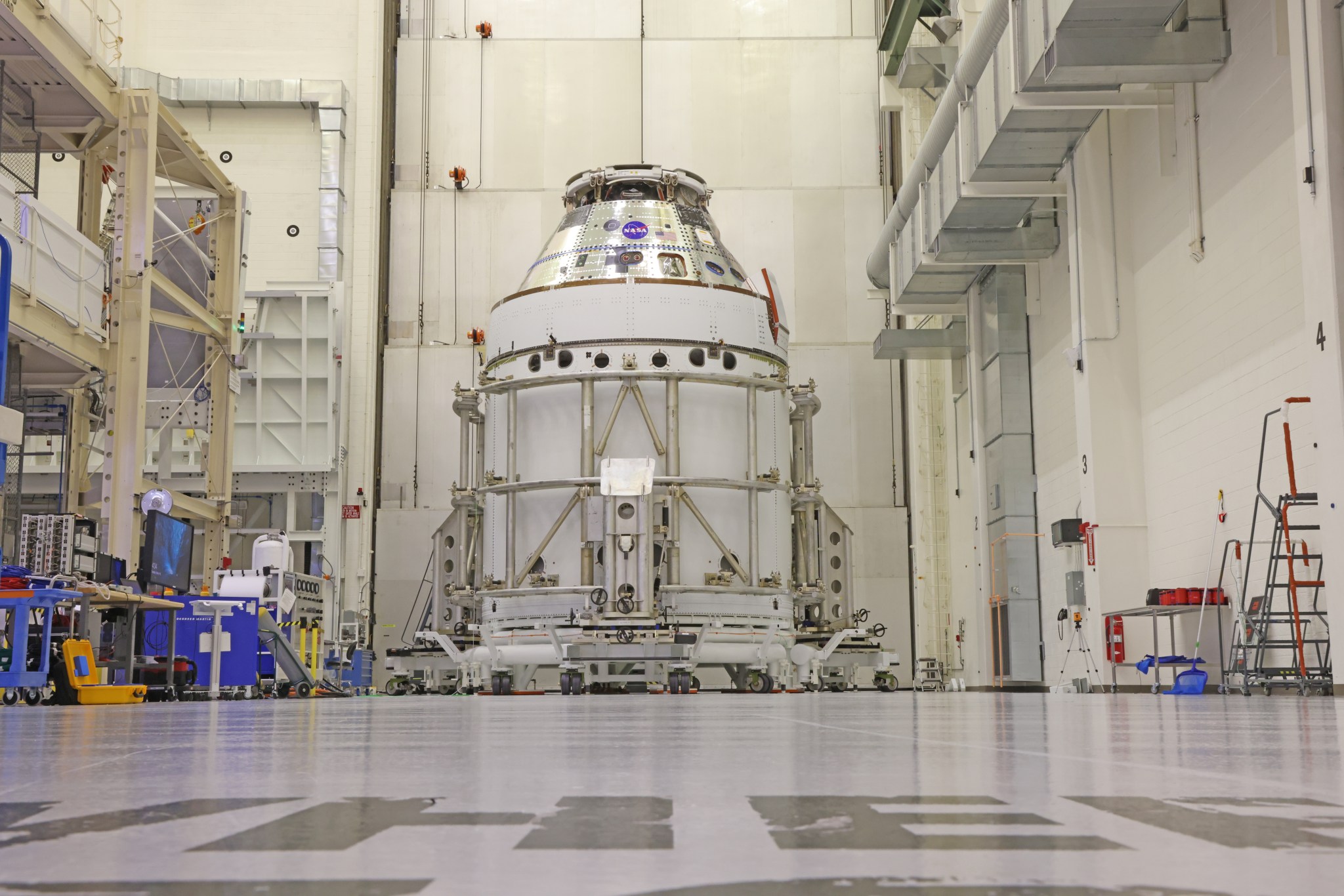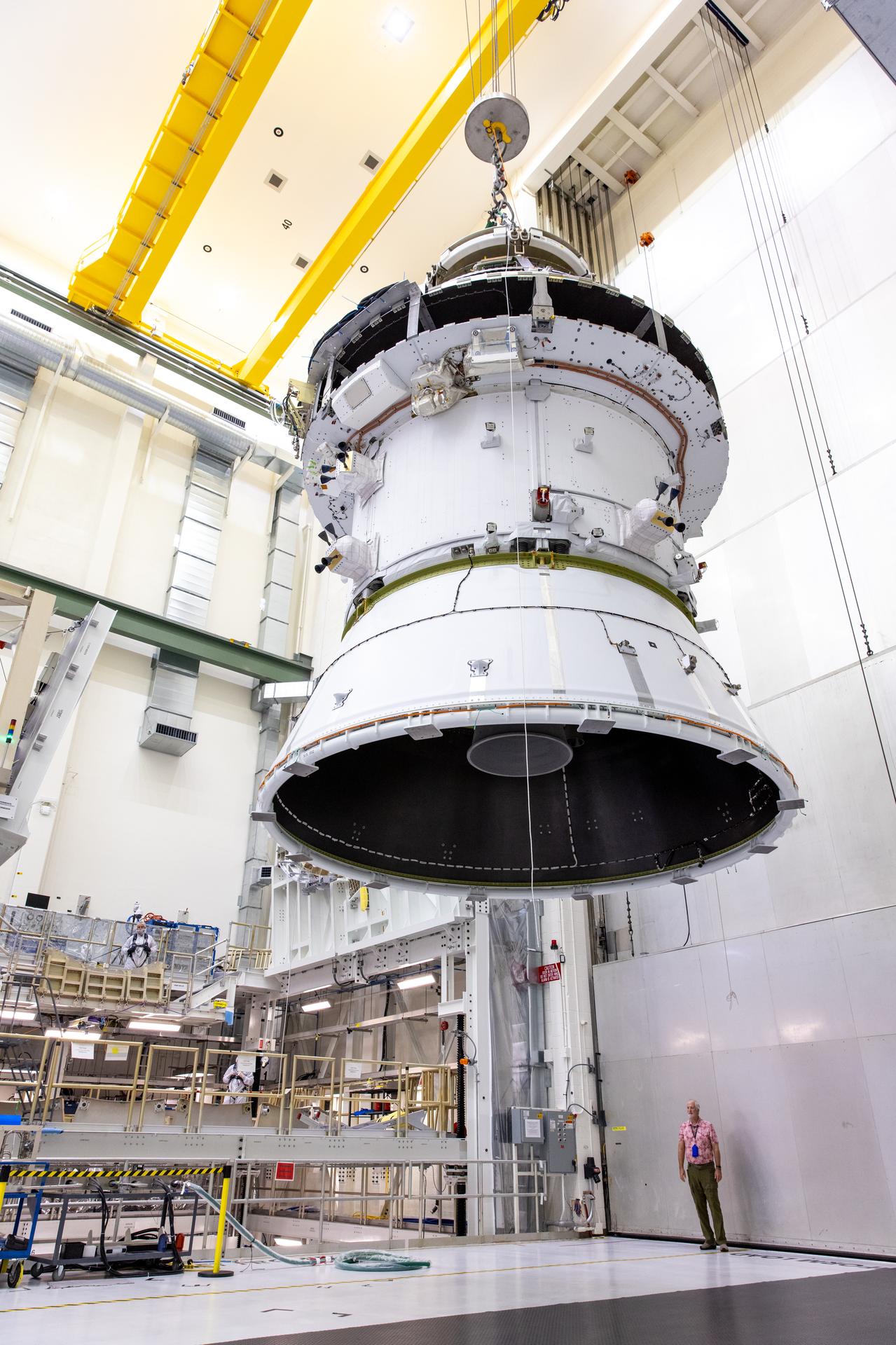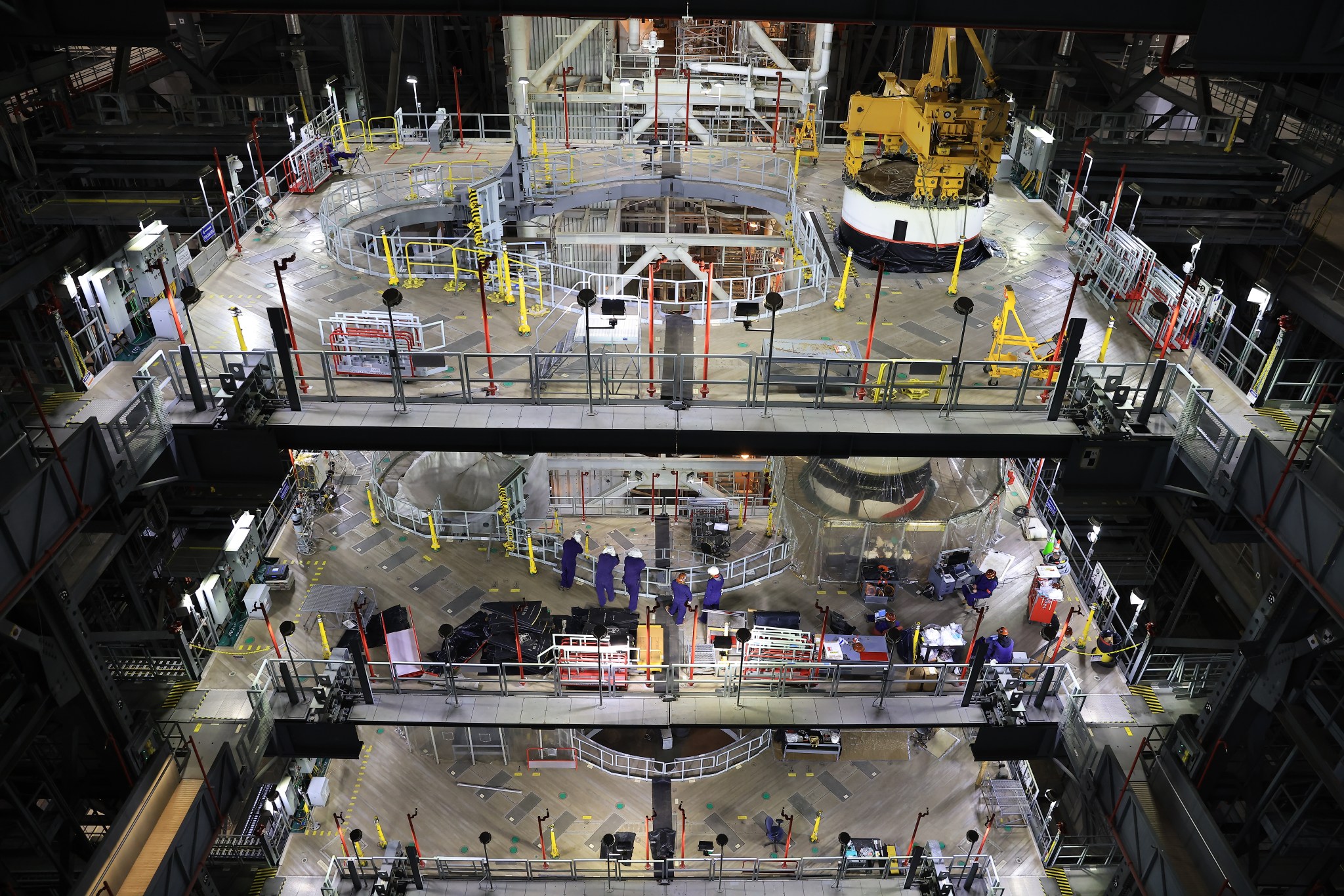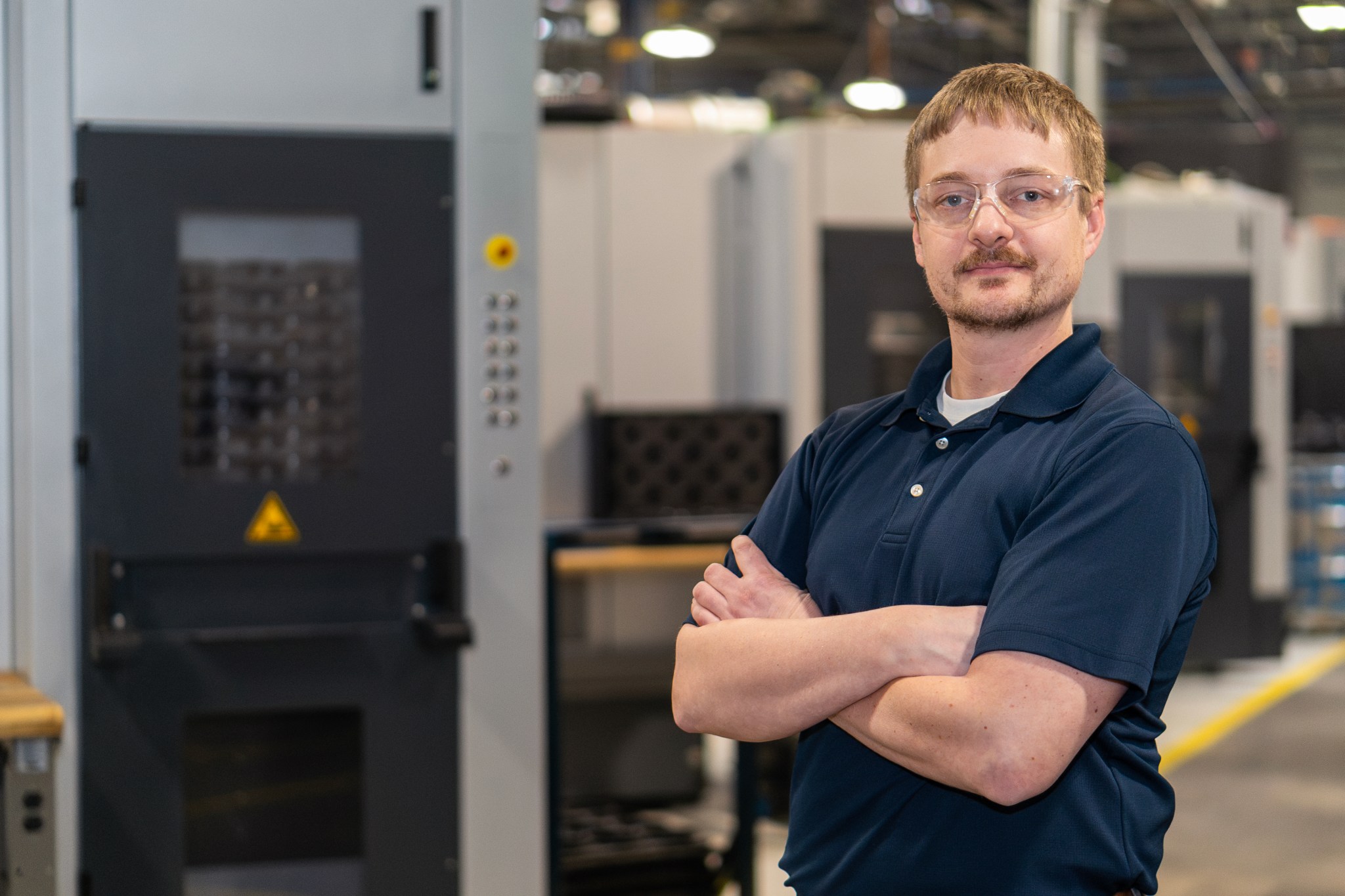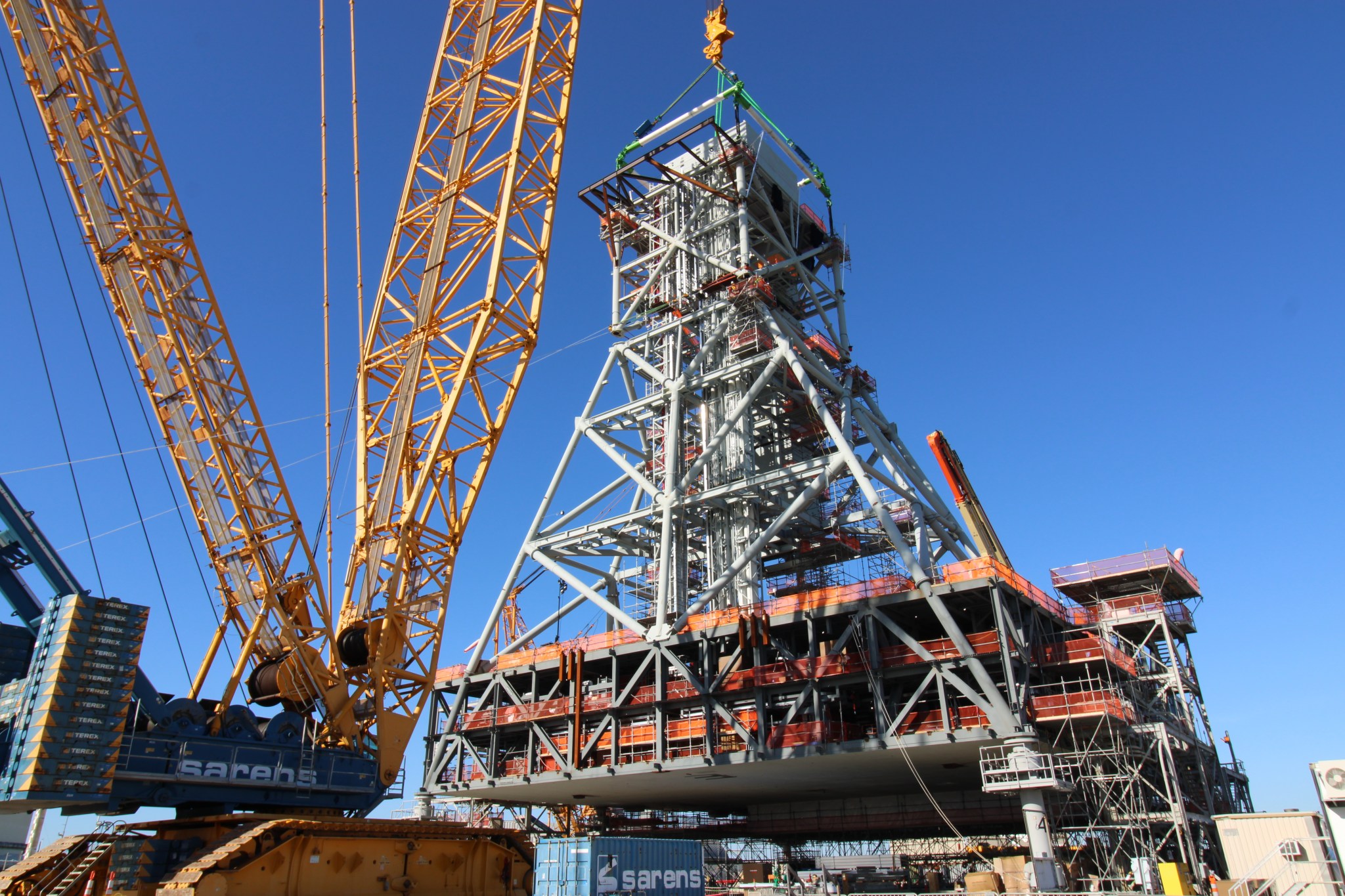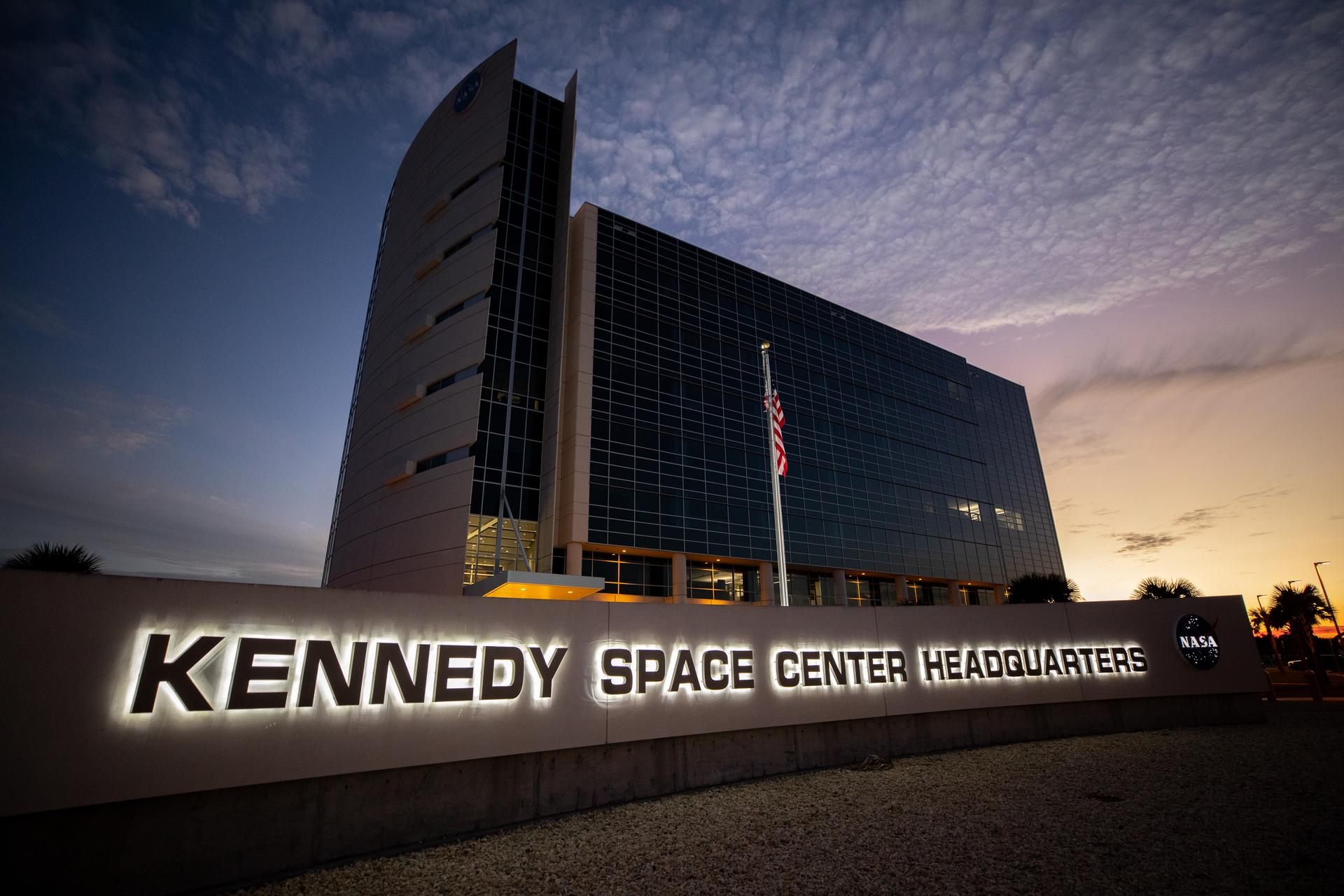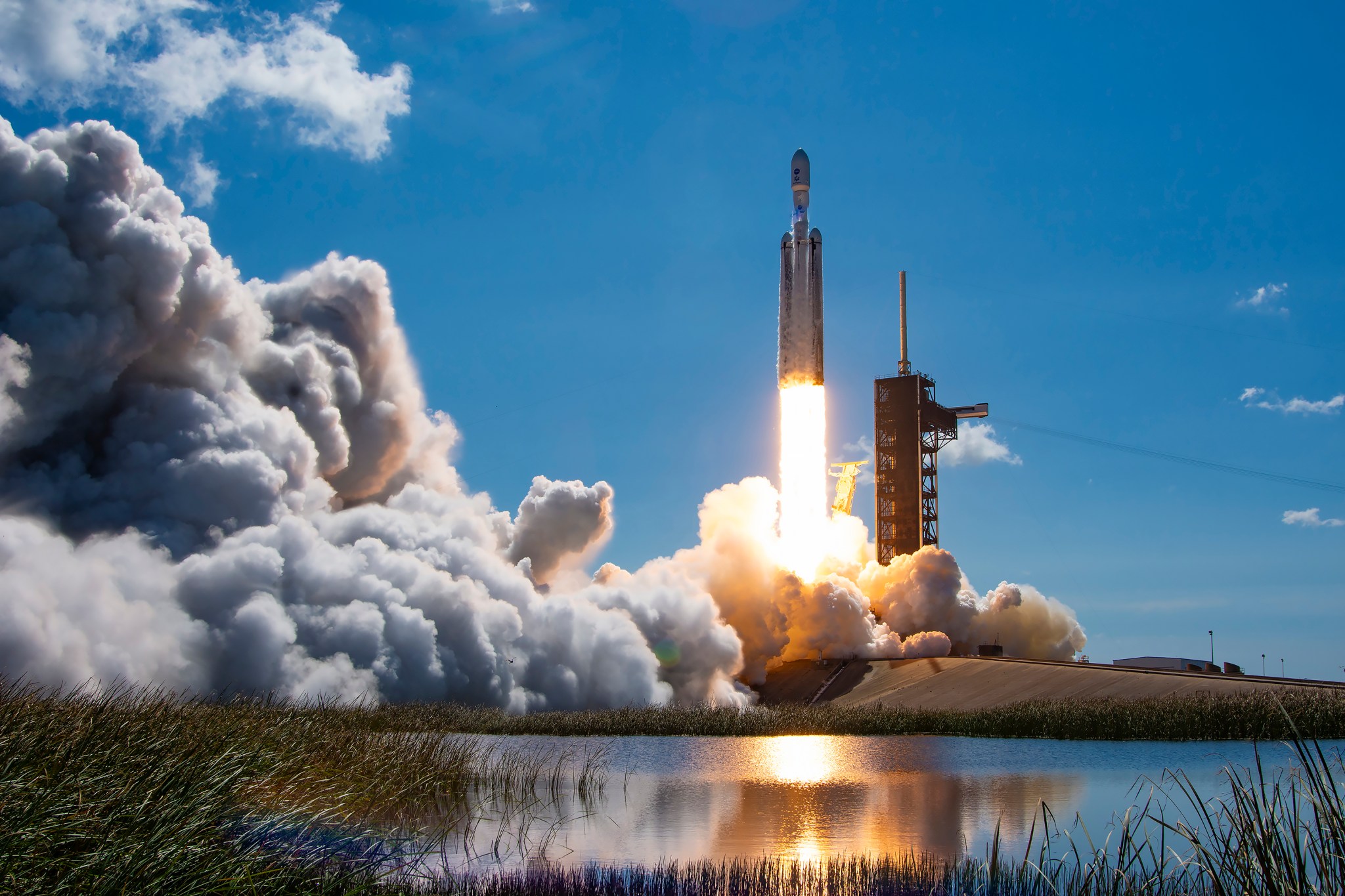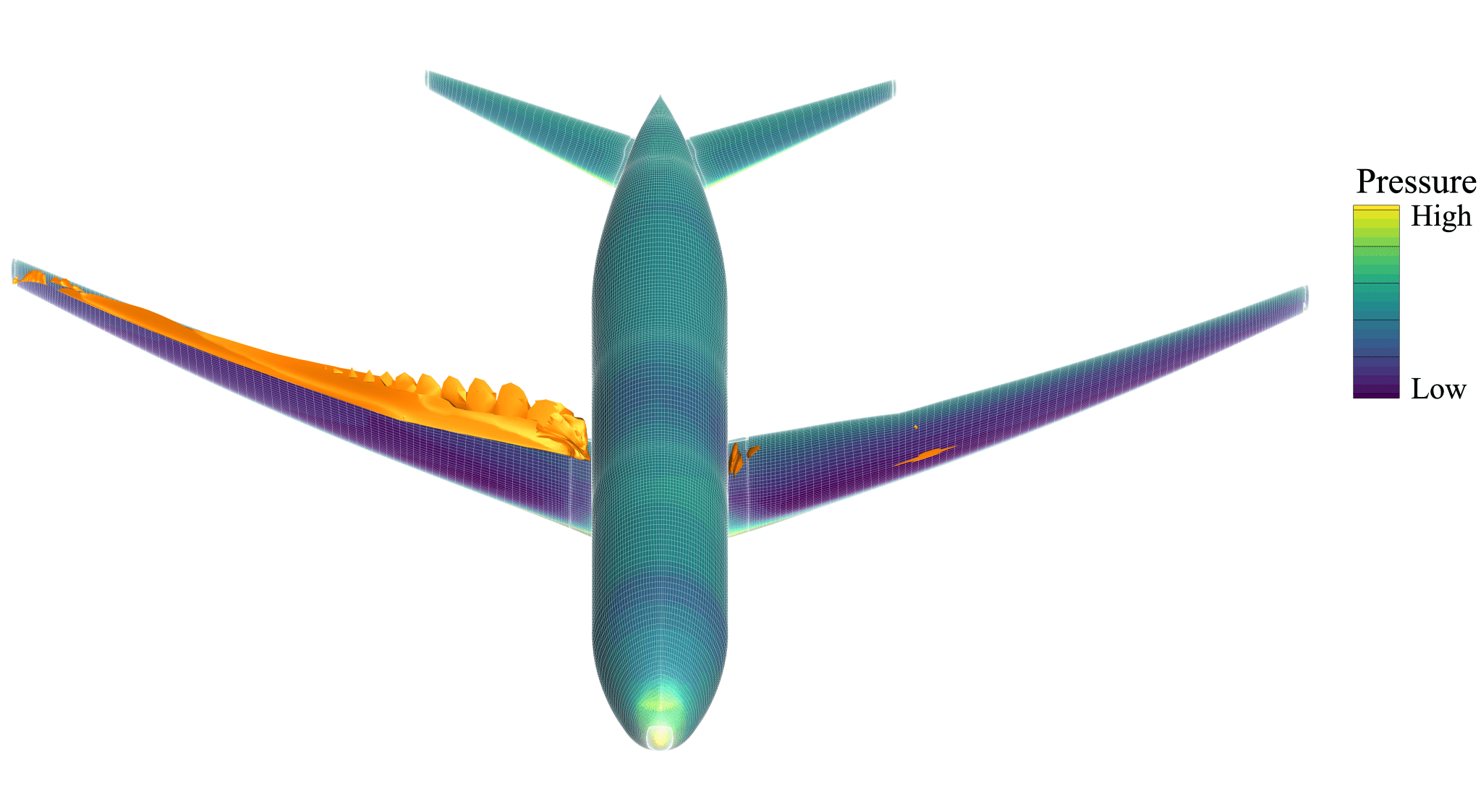Technicians move the Orion spacecraft for NASA’s Artemis II test flight out of the Neil A. Armstrong Operations and Checkout Building to the Multi-Payload Processing Facility at Kennedy Space Center in Florida on Saturday, May 3, 2025. NASA/Kim Shiflett Engineers, technicians, mission planners, and the four astronauts set to fly around the Moon next year on Artemis II, NASA’s first crewed Artemis mission, are rapidly progressing toward launch. At the agency’s Kennedy Space Center in Florida, teams are working around the clock to move into integration and final testing of…
Read MoreTag: Space Launch System (SLS)
Artemis II Insignia Honors All
Robert Markowitz The four astronauts who will be the first to fly to the Moon under NASA’s Artemis campaign have designed an emblem to represent their mission that references both their distant destination and the home they will return to. The crew unveiled their patch in this April 2, 2025, photo. The crew explained the patch’s symbolism, and its play on the abbreviation of Artemis II to AII, with the following description: The Artemis II test flight begins when a mighty team launches the first crew of the Artemis generation.…
Read MoreNASA’s Artemis II Orion Service Module Buttoned Up for Launch
Technicians with NASA and Lockheed Martin fitted three spacecraft adapter jettison fairing panels onto the service module of the agency’s Orion’s spacecraft. The operation completed on Wednesday, March 19, 2025, inside the Neil A. Armstrong Operations and Checkout Building at NASA’s Kennedy Space Center in Florida. The European-built service module is the powerhouse that will propel the spacecraft to the Moon. Its four solar array wings which were installed to its exterior in early March. The latest addition of fairing panels on Orion’s service module will protect the solar array…
Read MoreNASA Invites Media to Artemis II Moon Mission Activities at Kennedy
A massive crane lifts NASA’s Orion spacecraft out of the Final Assembly and System Testing cell and moves it to the altitude chamber to complete further testing on Thursday, Nov. 7, 2024, inside the Neil A. Armstrong Operations and Checkout building at NASA’s Kennedy Space Center in Florida. The altitude chamber simulates deep space vacuum conditions, and the testing will provide additional data to augment data gained during testing earlier this summer. Credit: NASA/Kim Shiflett Media are invited to visit NASA’s Kennedy Space Center in Florida, to capture imagery of…
Read MoreArtemis II Stacking Operations Update
Engineers and technicians with NASA’s Exploration Ground Systems Program integrate the right forward center segment onto mobile launcher 1 inside the Vehicle Assembly Building at NASA’s Kennedy Space Center in Florida on Wednesday, Jan. 22, 2025. The boosters will help support the remaining rocket components and the Orion spacecraft during final assembly of the Artemis II Moon rocket and provide more than 75 percent of the total SLS (Space Launch System) thrust during liftoff from NASA Kennedy’s Launch Pad 39B NASA/Kim Shiflett Teams with NASA’s Exploration Ground Systems Program continue…
Read MoreI am Artemis: Jon Carabello
Jon Carabello has spent his entire career at TURBOCAM, which produces 10 core stage main engine turbomachinery components for the RS-25 main engine on NASA’s SLS (Space Launch System) heavy lift exploration rocket. Photo: TURBOCAM Jon Carabello did not begin his career journey with an eye on space, but when NASA’s Artemis lunar exploration campaign came calling, he was all in. Born, raised, and college-educated in New Hampshire, Carabello has spent his entire professional career at TURBOCAM – a turbomachinery development and manufacturing company – in the southeast corner of…
Read MoreNASA Kennedy Ground Systems Prepping Hardware for Artemis II, Beyond
Teams with NASA are gaining momentum as work progresses toward future lunar missions for the benefit of humanity as numerous flight hardware shipments from across the world arrived at the agency’s Kennedy Space Center in Florida for the first crewed Artemis flight test and follow-on lunar missions. The skyline at Kennedy will soon see added structures as teams build up the ground systems needed to support them. Crews are well underway with parallel preparations for the Artemis II flight, as well as buildup of NASA’s mobile launcher 2 tower for…
Read MoreNASA’s Kennedy Space Center Looks to Thrive in 2025
Photographers at NASA capture the sunset on Tuesday, Jan. 30, 2024, near the headquarters building of the agency’s Kennedy Space Center in Florida. NASA/Ben Smegelsky As NASA’s Kennedy Space Center in Florida wraps up a year that will see more than 90 government, commercial, and private missions launch from Florida’s Space Coast, a look to 2025 shows the missions, partnerships, projects, and programs at the agency’s main launch site will continue innovating, inspiring, and pushing the boundaries of exploration for the benefit of humanity. “The next year promises to be…
Read MoreNASA Kennedy Top 24 Stories of 2024
A SpaceX Falcon Heavy rocket carrying NASA’s Europa Clipper spacecraft lifts off from Launch Complex 39A at NASA’s Kennedy Space Center in Florida at 12:06 p.m. EDT on Monday, Oct. 14, 2024. SpaceX From sending crew members to the International Space Station to launching a spacecraft to Jupiter’s icy moon Europa to determine if it could support life, 2024 was a busy record setting year for NASA and its partners at Kennedy Space Center in Florida. JANUARYFirst Lunar Lander Takes Flight The first flight of NASA’s CLPS (Commercial Lunar Payload…
Read MoreSix Ways Supercomputing Advances Our Understanding of the Universe
At NASA, high-end computing is essential for many agency missions. This technology helps us advance our understanding of the universe – from our planet to the farthest reaches of the cosmos. Supercomputers enable projects across diverse research, such as making discoveries about the Sun’s activity that affects technologies in space and life on Earth, building artificial intelligence-based models for innovative weather and climate science, and helping redesign the launch pad that will send astronauts to space with Artemis II. These projects are just a sample of the many on display in…
Read More